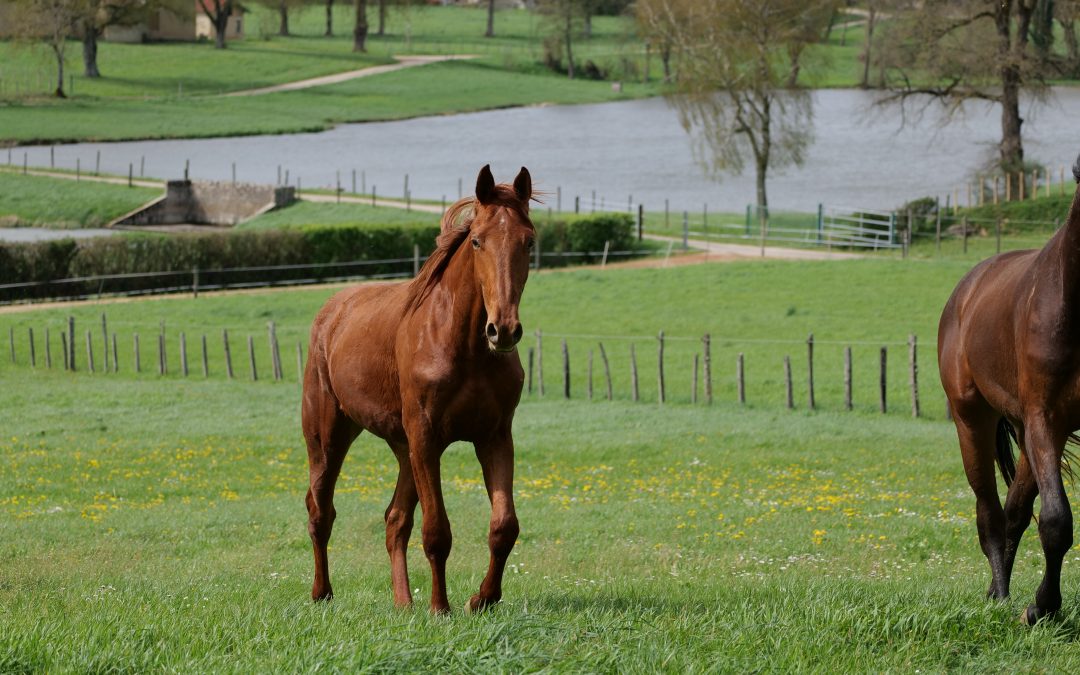Recipient mares are not just wombs, and if you want to make interesting savings, you need to give them the right care and selection,
With the advent and widespread use of ICSI frozen embryo production from your mares, breeders can now manage their herd of recipient mares more effectively and at lower cost. This is a new job for the breeder, and we need to give him the keys to a successful planting season.
𝗟’𝗶𝗺𝗽𝗼𝗿𝘁𝗮𝗻𝗰𝗲 𝗱𝘂 𝗰𝗵𝗼𝗶𝘅 𝗲𝘁 𝗱𝘂 𝗺𝗮𝗻𝗮𝗴𝗲𝗺𝗲𝗻𝘁 𝗱𝗲𝘀 𝗷𝘂𝗺𝗲𝗻𝘁𝘀 𝗿𝗲𝗰𝗲𝘃𝗲𝘂𝘀𝗲𝘀 𝗽𝗼𝘂𝗿 𝗹’𝗶𝗺𝗽𝗹𝗮𝗻𝘁𝗮𝘁𝗶𝗼𝗻 𝗱’𝗲𝗺𝗯𝗿𝘆𝗼𝗻𝘀 𝗰𝗼𝗻𝗴𝗲𝗹𝗲́𝘀
In the field of assisted equine reproduction, the success of embryo transfer relies heavily on the selection and appropriate management of recipient mares.
𝘾𝙤𝙣𝙣𝙖𝙞𝙨𝙨𝙖𝙣𝙘𝙚 𝙙𝙚 𝙨𝙤𝙣 𝙝𝙞𝙨𝙩𝙤𝙧𝙞𝙦𝙪𝙚 𝙚𝙣 𝙢𝙖𝙩𝙞𝙚̀𝙧𝙚 𝙙𝙚 𝙜𝙚𝙨𝙩𝙖𝙩𝙞𝙤𝙣 𝙚𝙩 𝙙’𝙞𝙢𝙥𝙡𝙖𝙣𝙩𝙖𝙩𝙞𝙤𝙣
Selecting a suitable recipient mare begins with a detailed assessment of her breeding history. We need to know what, if any, your previous performance has been in terms of gestation and embryo implantation, whether fresh or frozen. A mare with previous successful pregnancies with embryos is often preferable, as this demonstrates her ability to cope with the particularities of implantation. Complete and accurate records of her previous breeding cycles, ultrasound scans and results of previous pregnancies are therefore essential for an informed choice. This valuable data can be provided to the implantation center so that embryos can be selected according to the priority you give to each one.
𝗛𝗶𝘃𝗲𝗿𝗻𝗮𝗴𝗲 𝗲𝘁 𝗮𝗹𝗶𝗺𝗲𝗻𝘁𝗮𝘁𝗶𝗼𝗻
The physical conditioning of the recipient mare prior to embryo transfer is also a determining factor in the success of gestation. The wintering period must be carefully managed. Artificial light can be used to induce early cycles, enabling early implantation, but this photoperiod control also stimulates the production of hormones that regulate reproduction, favoring early and regular cyclic recovery.
At the same time, the mare’s diet needs to be closely monitored. A gradual transition to a richer diet may be necessary to ensure that the mare reaches optimum body condition at the time of transfer. It’s crucial that the mare is neither under- nor overweight, as both extremes can adversely affect the chances of successful implantation and gestation.
𝗟𝗮 𝘀𝗲́𝗹𝗲𝗰𝘁𝗶𝗼𝗻 𝗱𝘂 𝗯𝗼𝗻 𝗰𝘆𝗰𝗹𝗲
Selecting the right cycle for embryo transfer is critical. The chosen cycle must coincide with optimal uterine condition, which requires careful evaluation by a veterinary gynecologist who routinely notes uteri 4 days after ovulation. The evaluation includes inspection of the thickness and health of the uterine mucosa, as well as confirmation of the absence of pathologies such as cysts or inflammation that could hinder embryo implantation. The size and homogeneity of the corpus luteum helping to support getsation is also important. The timing of implantation requires precision; the day of ovulation must be known precisely.
𝗟𝗲 𝗺𝗮𝗶𝗻𝘁𝗶𝗲𝗻 𝗱𝗲𝘀 𝗰𝗼𝗻𝗱𝗶𝘁𝗶𝗼𝗻𝘀 𝗱𝗲 𝘃𝗶𝗲
As far as possible, the more a mare has been accustomed to a quality environment surrounded by congeners, the more important it is for her to return there after implantation in order to avoid the stress of encountering a new herd.
A recipient mare is not just a belly, she’s a mare whose fertility will depend essentially on her well-being and good gynecological and nutritional management.
In conclusion, the success of frozen embryo transfer depends largely on the ability to select and manage recipient mares correctly. Meticulous attention to their breeding history, physical condition, and selection of the right breeding cycle is essential to maximize the chances of success. Consequently, the management of these mares must be approached with scientific rigor and attention to detail to ensure the best possible outcome for equine assisted reproduction.

Sébastien Neyrat
Manager European Stallions Resort
Sébastien Neyrat manages ICSI frozen embryo implantations. By working with Florine Dufournel to ensure the quality of brood mares, the implantation rate in 2024 is 83% at 45 days gestation. A record
